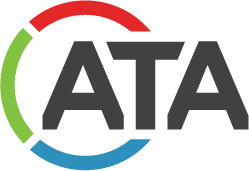Proposed changes to codes governing tent installations to be discussed at the April ICC Committee Action Hearing.
IFAI’s Tent Rental Division (TRD) submitted four proposals for changes in codes that relate to tent installation, plus an appendix proposal, as part of the Group B I-Code Development Cycle for the 2018 Model Code.
The Special Events Work Group of the Fire Code Action Committee (FCAC) also submitted proposals related to tent codes. All code change proposals for the IFC are available on the ICC’s website.
The code committee of TRD, chaired by steering committee member Tom Markel of Bravo Events, Buffalo, N.Y., debated and submitted code changes, some in response to the Special Events work group. “Although some increased cost will be involved with our proposals, some code officials are advocating for changes that add expensive requirements, increasing installation costs without increasing safety,” Markel says. “The code changes TRD has proposed utilize changes that the industry can accomplish and enhance safety.”
The TRD code change proposals are described below.
F301-16: Construction documents and anchorage
This proposal would require that the owner agent and installer furnish documentation of anchorage and structural stability to the fire code official. The specific documentation requirements under this proposal depend on the size of the installation.
An installation with an occupant load of 50 or an area of 800 square feet or less shall require an anchorage plan. The plan would need to come from the tent manufacturer, or the owner/ installer would need to show that anchorage would be at least 10 pounds per square foot equally divided between all anchor points.
An installation with an occupant load of 50 to 299 or an area not exceeding 5,000 square feet shall require an anchorage plan from either a tent manufacturer or a registered design professional. The plan shall certify that the minimum wind load of the tent is 45 miles an hour.
An installation with an occupant load of 300 to 999 or an area not exceeding 15,000 square feet shall require an anchorage plan from the manufacturer or a registered design professional. The plan shall certify compliance to either IBC sections 1606 (dead loads), 1607 (live loads), 1608 (snow loads) and 1609 (wind loads) or ASCE-7.The plan would not need to be site specific, however. “This is in response to the work group that said for occupancies over 300 they want site-specific engineering,” Markel says. “We’re taking it down a notch, however this will require a better grade of tents than some currently use or own, better installation and documentation.”
An installation with an occupant load of 1,000 or more or an area greater than 15,000 square feet shall require an anchorage plan reviewed by a registered design professional with certification for compliance to either IBC sections 1606, 1607, 1608 and 1609 or ASCE-7. The manufacturer or the registered design professional shall provide a site-specific anchorage plan. (Ice and snow loads may be omitted for use periods that don’t coincide with the conditions.)
F302-16 Inspection
The current code requires that an installation be inspected twice if it will be installed more than 30 and less than 180 days. The TRD is proposing that tents should be inspected once every additional 30-day period for any installation that exceeds 30 days. In addition, an inspection should occur after any weather event that could compromise the anchorage and structural stability. Deficiencies must be documented and remediation reported to the fire code official and corrected before the structure is used or occupied. Under this proposal, an approved third-party inspector would be acceptable when allowed by the fire code official.
F304-16 Flame propagation, labeling and flame retardancy
The purpose of this proposal is to update the code to recognize that most fabrics used today are inherently fire retardant and do not need repeated flame retardant treatments. Under the proposal, tent installers would need to:
Declare the type of fabric: treated or inherently flame retardant.
Affix a label to the tent readable at 7 feet that contains the information required in the certification.
If the fabric requires flame retardancy treatment, the label shall include the name, address and contact information of the owner of the structure, the type and trade name of the flame retardant used, the date of application and the company that applied the flame retardant.
If the fabric is inherently flame retardant, the label shall include the name and address of the owner of the structure, the manufacturer of the fabric, the test method used to certify the fabric and the date the tent was manufactured.
Decorative or combustible materials shall require a label, but the label does not need to be visible. The installer would have to certify that the materials were treated or were inherently fire retardant.
F305-16 Fire extinguishers
This proposal would require a fire extinguisher within 6 feet of any exit in a tent and additional extinguishers if they are needed per IFC Section 906 (75 feet of travel distance between extinguishers). The minimum fire extinguisher shall have a 2A:20B:C rating. “This change simplifies location, number and size of fire extinguishers,” Markel says. “Most of the time placing one at the (required) exit satisfies the 75-feet travel distance. The size requirement equals what most people would call a 10-pound extinguisher.”
F410-16 Staking study
In addition to the four code change proposals, TRD submitted the formulas and tables of the TRD Staking Study as a proposed addition to the IFC appendix. Installations are not required to follow the appendix section unless a jurisdiction specifically adopts the appendix in addition to the IFC. “Many code officials are aware of the staking study and would like to see information,” Markel says. “By submitting it, officials may consider if and how the study could be incorporated into their code.”
Source: http://intentsmag.com/2016/03/29/trd-submits-code-changes/
 TEXTILES.ORG
TEXTILES.ORG



